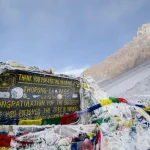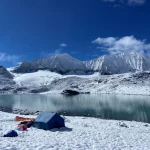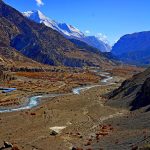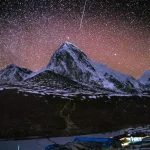Introduction to Taksera Nepal: A Cultural and Natural Treasure
Nestled in the heart of East Rukum District in Lumbini Province, Taksera Nepal, is a hidden gem that offers an authentic glimpse into Nepal’s rich cultural heritage and breathtaking natural beauty.
Also known as Takasera, this picturesque village sits at altitudes ranging from 2,200m to 3,600m, surrounded by the majestic Mt. Sisne and vibrant Rhododendron forests. With a population of 3,698 (2011 census) and a strong Kham Magar culture, Taksera is a must-visit destination for travelers seeking off-the-beaten-path adventures and eco-tourism experiences in Nepal.

In this comprehensive guide, we’ll explore why Taksera village is a unique destination, highlighting its cultural significance, natural attractions, tourism activities, and practical travel tips for 2025. Whether you’re a culture enthusiast, a nature lover, or an adventure seeker, Taksera Nepal has something extraordinary to offer.
Why Visit Taksera Nepal? Key Highlights
1. Rich Kham Magar Culture

The Kham Magar community forms the heart of Taksera’s identity. Known for their vibrant traditions, this indigenous group celebrates festivals like Bhume Puja, a ritual honoring the earth deity, with folk songs, dances, and communal feasts. Visitors can immerse themselves in:
- Traditional dances and music: Experience the rhythmic beats of local folk songs passed down through generations.
- Handcrafted products: Shop for authentic sheep wool clothing, a specialty of Taksera, showcasing the community’s craftsmanship.
- Local cuisine: Savor organic dishes made from locally grown ingredients, reflecting the village’s sustainable lifestyle.
2. Stunning Natural Beauty

Taksera Nepal is a paradise for nature enthusiasts. The village offers panoramic views of Mt. Sisne, one of Nepal’s lesser-known but spectacular peaks. Other natural attractions include:
- Rhododendron forests: These vibrant forests bloom in spring, creating a colorful backdrop for treks and photography.
- High-altitude landscapes: Explore rolling hills and serene meadows at elevations up to 3,600m.
- Biodiversity: Discover unique flora and fauna, including medicinal herbs like Yarsagumba and Shilajit, which are harvested locally.
3. Eco-Tourism and Adventure Opportunities
For those seeking sustainable travel, East Rukum tourism in Taksera emphasizes eco-friendly practices. Popular activities include:
- Helicopter tours: Get a bird’s-eye view of Mt. Sisne and the surrounding Himalayan landscapes.
- Trekking and hiking: Explore trails that wind through forests and offer stunning vistas, suitable for both beginners and experienced trekkers.
- Cultural homestays: Stay with local families to experience authentic Nepali hospitality and learn about Kham Magar traditions firsthand.
A Glimpse into Taksera Village: History and Demographics
Taksera, located in Putha Uttarganga Rural Municipality, is a small but vibrant community with 902 households (2011 census).
The village’s high-altitude setting and remote location have preserved its cultural and natural heritage, making it a unique destination in Nepal’s eco-tourism.
The Kham Magar people, who dominate the region, are known for their resilience and deep connection to the land, which is reflected in their festivals, agriculture, and artisanal products.
The village’s economy relies on agriculture, animal husbandry, and the trade of local products like woolen goods and medicinal herbs. In recent years, tourism has emerged as a growing sector, with initiatives to promote Taksera as a sustainable travel destination.
Top Things to Do in Taksera, Nepal
1. Attend the Bhume Puja Festival
The Bhume Puja is a highlight of Taksera’s cultural calendar. Held annually, this festival celebrates the earth and brings the community together for rituals, dances, and feasts. Visitors are welcome to join, offering a rare opportunity to engage with Kham Magar culture.
2. Trek to Mt. Sisne

For adventure seekers, trekking to or around Mt. Sisne is a must. The trails offer moderate to challenging routes, with rewards like breathtaking views and encounters with local wildlife. Spring and autumn are the best seasons for trekking in Taksera, Nepal.
3. Explore Local Markets
Taksera’s markets are a treasure trove of handmade goods. Look for:
- Sheep wool clothing: Warm, durable, and intricately designed jackets, scarves, and blankets.
- Medicinal herbs: Yarsagumba and Shilajit, prized for their health benefits, are available from local harvesters.
- Organic fruits: Taste fresh, locally grown apples, walnuts, and other produce.
4. Take a Helicopter Tour
For a unique perspective, book a helicopter tour to soar above Taksera’s landscapes. These tours showcase the rugged beauty of East Rukum, including Mt. Sisne and the Rhododendron forests, and are perfect for photographers and luxury travelers.
5. Stay in a Cultural Homestay
Immerse yourself in Taksera village life by staying with a local family. Homestays offer cozy accommodations, home–cooked meals, and storytelling sessions that bring the Kham Magar culture to life.
How to Reach Taksera, Nepal
Reaching Taksera, Nepal, requires some planning due to its remote location in East Rukum. Here’s a quick guide:
- By Air: Fly from Kathmandu to Nepalgunj or Pokhara, then take a connecting flight or helicopter to Rukum Salle Airport, the closest airstrip to Taksera.
- By Road: From Nepalgunj, hire a jeep or take a local bus to Musikot, the district headquarters of Rukum. From there, a combination of jeep rides and trekking will get you to Taksera village.
- Best Time to Visit: Spring (March–May) and autumn (September–November) offer pleasant weather and clear views, ideal for trekking and sightseeing.
Tip: Work with a local tour operator specializing in East Rukum tourism for a hassle-free trip, including permits and guides.
Practical Travel Tips for Taksera, Nepal
- Pack for High Altitude: Bring warm clothing, sturdy trekking shoes, and sunscreen, as temperatures can vary significantly.
- Respect Local Customs: Dress modestly and ask for permission before photographing people or sacred sites.
- Stay Hydrated: Carry a reusable water bottle and use purification tablets for safe drinking water.
- Support Local Businesses: Purchase souvenirs and dine at local establishments to contribute to the village’s economy.
- Plan for Limited Connectivity: Mobile and internet access may be spotty, so inform family or friends of your itinerary in advance.
Why Taksera Nepal is Perfect for Eco-Tourism
Nepal’s eco-tourism is gaining traction, and Taksera is at the forefront of this movement. The village’s commitment to sustainability is evident in:
- Organic farming: Most food is grown without chemicals, ensuring a low environmental footprint.
- Community–led tourism: Local guides and homestays empower residents and preserve cultural heritage.
- Conservation efforts: Initiatives to protect Rhododendron forests and wildlife promote biodiversity.
By visiting Taksera, you’re supporting a community that prioritizes environmental and cultural preservation, making your trip both meaningful and impactful.
Conclusion: Plan Your Visit to Taksera Nepal in 2025
Taksera Nepal is more than just a destination—it’s an experience that combines the beauty of the Himalayas with the warmth of Kham Magar culture.
Whether you’re trekking to Mt. Sisne, savoring organic cuisine, or joining the Bhume Puja festival, Taksera village promises memories that will last a lifetime. As East Rukum tourism grows, now is the perfect time to explore this hidden gem before it becomes a mainstream hotspot.
Keywords: Taksera Nepal, Taksera village, East Rukum tourism, Kham Magar culture, Nepal eco-tourism, Mt. Sisne, Nepal travel guide








